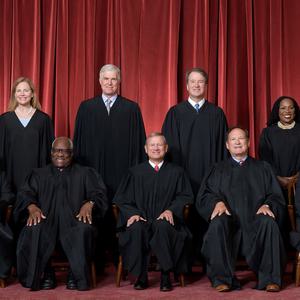
The U.S. Supreme Court’s “shadow docket” is having a growing and disproportionate impact on the Court’s resolution of controversial social issues, with some of its most profound effects being felt in death penalty cases.
The term, coined in 2015 by law professor William Baude, refers to expedited emergency rulings made by the court without full briefing and argument, typically unsigned and rendered without an opinion explaining the Court’s legal reasoning. In a seven-article online symposium published by SCOTUSblog from October 22 – October 28, 2020, legal experts dissect the institutional implications of the recent explosion of these decisions and discuss their impact on cases addressing national elections, immigration, state and local responses to the coronavirus pandemic, and the death penalty.
In her symposium article, The shadow docket is shaping the future of death penalty litigation, DPIC Senior Director of Research and Special Projects Ngozi Ndulue (pictured) explores the Court’s series of late-night unsigned decisions vacating or denying stays or injunctions that would have temporarily halted federal executions to permit lower courts to review factual or legal disputes material to the outcome of the cases. The Court’s rulings, Ndulue argues, “were exceptional and will continue to reverberate in death-penalty and non-death-penalty cases for years to come.”
In the days and hours before the first federal executions in mid-July 2020, the court issued cursory unsigned 5 – 4 orders reversing several district court injunctions that had been left in place by the federal courts of appeal and denying defense applications for stays of execution to permit case-related appeals to go forward. Disregarding traditional appellate rules of requiring evidentiary hearings to resolve disputed issues of material fact and then deferring to fact findings of the trial court that are supported by the record, the Court ruled against the death-row prisoner in every case. In dissent in Barr v. Lee, Justice Sotomayor wrote:
“The Court hastily disposes of respondents’ Eighth Amendment challenge to the use of pentobarbital in the Federal Government’s single-drug execution protocol. In doing so, the Court accepts the Government’s artificial claim of urgency to truncate ordinary procedures of judicial review. This sets a dangerous precedent. … [B]ecause of the Court’s rush to dispose of this litigation in an emergency posture, there will be no meaningful judicial review of the grave, fact-heavy challenges respondents bring to the way in which the Government plans to execute them.”
The three-page ruling that lifted the federal district court’s injunction left the lower court in the dark in interpreting its meaning. That proved critical after an autopsy provided evidence that Wesley Purkey had, to a medical certainty, been conscious and aware while suffering flash pulmonary edema — a sensation akin to waterboarding and suffocation — during his execution.
The new evidence confirmed the district court’s preliminary fact-finding that had been the basis for its initial injunction against the pentobarbital executions. However, in the wake of the spate of Supreme Court shadow docket decisions allowing executions to proceed, the district court denied a new injunction to Keith Nelson. The district court wrote, “Lee suggests that no amount of new evidence will suffice to prove that the pain pentobarbital causes reaches unconstitutional levels.” The appeals court did not adopt this reading of Lee, but nevertheless upheld the denial of a new injunction.
“The Supreme Court’s rulings on federal executions show the power and the danger of its shadow docket,” Ndulue writes. “The injunctions issued the week of the executions involved important issues of constitutional law, statutory interpretation and administrative law. The Supreme Court overruled the considered decisions of the lower courts without full briefing, in the middle of the night and with little guidance to lower courts for future cases. One could take away from this spate of decisions that the current court is unsympathetic to ‘last-minute litigation,’ or one can interpret the decisions – just as the D.C. district court did — as sending signals about the Supreme Court’s general outlook on the merits of capital claims.”
James Romoser, Symposium: Shining a light on the shadow docket, SCOTUSblog, October 22, 2020; Ngozi Ndulue, Symposium: The shadow docket is shaping the future of death penalty litigation, SCOTUSblog, October 26, 2020; Judge Trevor McFadden and Vetan Kapoor, Symposium: The precedential effects of shadow docket stays, SCOTUSblog, October 28, 2020
United States Supreme Court
Oct 08, 2024

United States Supreme Court Will Consider Significance of Prosecutor’s Confession of Error in Glossip v. Oklahoma
United States Supreme Court
Sep 16, 2024

NEW RESOURCE: American Bar Association Reports on Capital Punishment and the State of Criminal Justice 2024
United States Supreme Court
Apr 24, 2024
